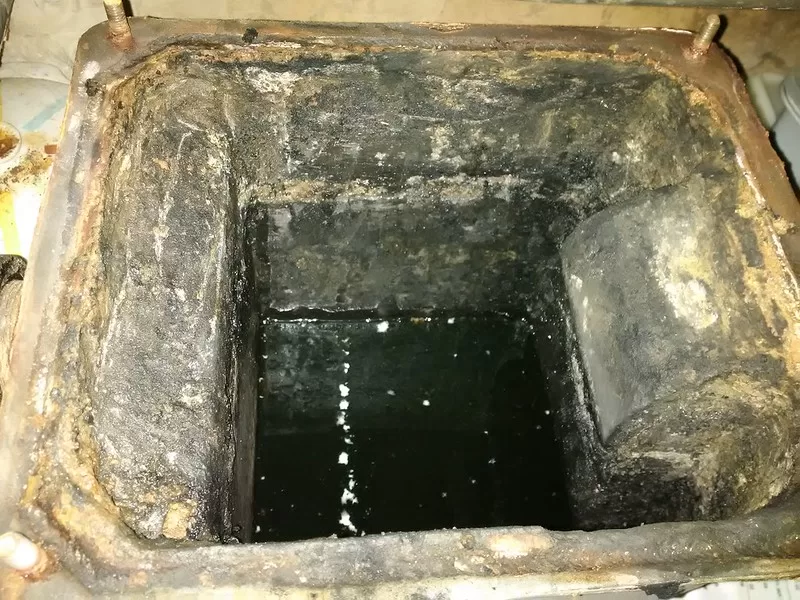Cleaning grease traps is just part of the cost of doing business as a commercial kitchen. No restaurant owner wants to shell out for a service that doesn’t add revenue, improve food quality, or draw in more customers.
However, the negative results of failing to clean commercial grease traps according to a reasonable schedule outweigh by far any concerns about spending the money on having them pumped out and professionally cleaned.

Manufacturer’s Recommendations
Commercial grease trap manufacturers put out recommendations regarding how often their products must be cleaned. Most recommend servicing grease traps at least once every one to three months, although all acknowledge that a range of factors influences the actual frequency at which cleaning should be performed.
To complicate matters further, restaurant owners don’t always know their grease trap manufacturers’ guidelines, especially if they purchased the restaurant after it was fully operational. As long as they don’t allow the situation to get out of hand, that’s not usually a problem.
Legal Concerns
Some municipalities have specific legal codes governing the frequency at which a restaurant must empty its grease traps. Restaurant owners should check their state codes to ensure that whatever schedule they wind up on will be in compliance with them.
Few places allow restaurants to clean grease traps less often than once every 90 days, with many requiring grease trap pumping at 30-day intervals.
The easiest way to stay on top of state and local laws regarding grease trap maintenance is to work with professionals. Septic service companies often clean commercial grease traps, as well, so that’s the best place to start the search for a local pro.
Read Also:
Practical Recommendations
All manufacturers’ recommendations and legal requirements aside, there is an easy way to determine whether it’s time to have a grease trap cleaned. If the grease or solids are taking up more than 25% of the volume of the trap, it’s time to call for help.
Once it reaches this level, the grease will be more likely to flow through the trap and into the building’s plumbing system, where it can cause all kinds of problems.
Keeping grease traps at less than 25% capacity eliminates disruptions during business hours that can cause customer dissatisfaction and leave restaurants facing revenue losses.
Regular maintenance also ensures that kitchen owners won’t need to call for emergency drain cleaning, which costs significantly more than scheduled grease trap maintenance.
Finding the Right Grease Trap Cleaning Schedule
Coming up with the right grease trap cleaning schedule requires balancing the need to maintain cleanliness and avoid clogged pipes against the desire to save money by spacing out the services as long as possible.
The easiest way to figure out a schedule is to ask someone who does it for a living. What they’ll probably say is that it depends primarily on two factors:
- The size of the trap
- How much grease is introduced each day
When in doubt, the smartest thing to do from an economic standpoint is to schedule the cleanings a little too often rather than risking the consequences of allowing the grease trap to get overfilled.
Scheduling cleanings a few days early might eventually cost a restaurant an extra few dollars. Allowing the grease trap to overfill can cost money not just in the form of emergency cleanings but also potential fines and reputational damage.
When to Schedule Extra Cleanings
Most restaurant owners notice at least some amount of seasonality when it comes to how often people go out to eat, although how it manifests depends on customer demographics and the types of food being served.
During busier times of the year, it can help to schedule extra cleanings. Restaurant owners and crews should also keep an eye out for four common signs that grease traps are getting too full:
1. Foul Odors
When grease traps become overfilled, the rancid foods, fats, and cooking oils build up, creating a foul odor. This odor can be quite strong, often permeating the kitchen and making its way out to the dining area.
2. Slow Drainage
When fats, oils, and grease accumulate in a grease trap and begin to cool, they solidify. The resultant solids build up in the trap, decreasing water flow and leading to slow drainage often throughout the kitchen. Eventually, if no one does anything, full-on clogs will form.
3. Grease in Unusual Places
When grease traps overfill and the solids start to build up, causing blockages, the water will still find someplace to go.
In many cases, it backs up into the trap and finds alternative exit points to other drainage points, eventually leading it into other sinks. If workers are finding grease in sinks that never see food scraps introduced into them, it’s beyond time to clean the grease trap.
4. Fruit Flies
Finally, while the odors produced by rotting food in an overfilled grease trap may smell putrid to people, they’re very appealing to fruit flies. If kitchen workers begin to notice fruit flies near the sinks or drains, that’s another sure sign of trouble.
How to Reduce Cleaning Frequency
While it’s never wise to allow a grease trap to become overfilled, there are some things restaurant staff can do to help keep grease traps clean between professional pumping. They include:
- Recycling waste cooking oil.
- Dry-wiping cookware and dishes before they’re cleaned.
- Placing strainers in drains.
- Covering outdoor grease containers.
- Avoiding the introduction of grease into sinks and toilets.
- Using bacterial cleaners to maintain grease traps.
- Avoiding harsh chemicals.
Get Help With Managing Grease Trap Cleaning
Restaurant owners shouldn’t have to be checking to see if their grease traps are reaching the ¼ mark every day, nor should the staff be worrying about fruit flies and foul odors.
Instead of allowing things to get to the point where everyone is constantly worried that the grease trap is getting overfilled, hire a septic pumping company that routinely handles grease trap cleaning, as well, and ask about scheduling recurrent cleanings.
These experts should be able to offer advice as to how often the grease trap needs to be cleaned to meet code requirements and prevent problems.









